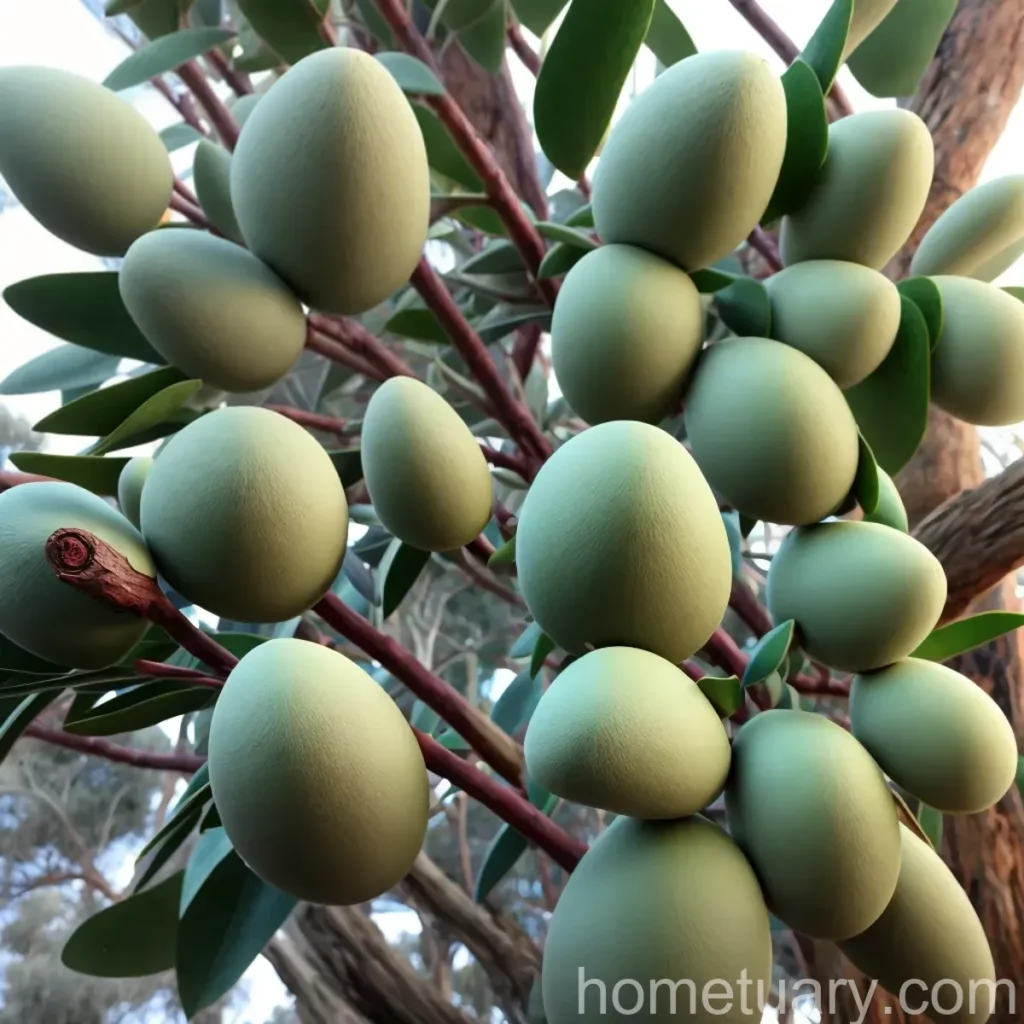Plant Scientist’s Guide to Mountain Gum (Eucalyptus dalrympleana)
Eucalyptus dalrympleana, commonly known as mountain gum, is a magnificent tree species that is valued for its ornamental beauty and diverse uses. As a plant scientist, I’m excited to delve into the world of mountain gums, exploring their characteristics, cultivation techniques, and ecological importance. In this comprehensive guide, we will discuss everything from their habitat and growth habits to their medicinal uses and ecological benefits.
What is Mountain Gum (Eucalyptus dalrympleana)?
Eucalyptus dalrympleana, belonging to the Myrtaceae family, is a tall, evergreen tree native to the mountainous regions of Tasmania and southeastern Australia. It is characterized by its striking bark, glossy green leaves, and elegant appearance, making it a popular choice for landscaping and forestry purposes.
Key Takeaways – Mountain Gum (Eucalyptus dalrympleana)
- Scientific Name: Eucalyptus dalrympleana
- Common Name: Mountain Gum
- Family: Myrtaceae
- Native Habitat: Mountainous regions of Tasmania and southeastern Australia
- Characteristics: Tall, evergreen tree with glossy green leaves and unique bark patterns
- Uses: Ornamental, timber production, medicinal, and ecological benefits
Now, let’s explore the various aspects of cultivating and caring for mountain gum trees.
Culture
Cultivating mountain gum trees requires an understanding of their specific cultural needs, ranging from water and sunlight requirements to soil preferences and pruning techniques.
Water
Mountain gum trees thrive in well-drained soil and require regular watering, especially during the initial stages of growth. However, they are also resilient to drought conditions once established, making them suitable for landscapes with varying moisture levels.
Sunlight
These trees prefer full sun and thrive in open, sunny locations. Adequate sunlight is essential for their healthy growth and development.
Fertilizer
While mountain gum trees are relatively low-maintenance, occasional fertilization can promote their vigor and overall health. A balanced, slow-release fertilizer applied during the growing season can help support their nutrient requirements.
Soil
Eucalyptus dalrympleana prefers acidic to neutral soil with good drainage. They can adapt to a wide range of soil types, including sandy and loamy soils, but dislike waterlogged conditions.
Pruning
Pruning is an essential aspect of mountain gum tree maintenance, helping to shape their growth, remove dead or damaged branches, and enhance their overall appearance. It is recommended to undertake pruning during the tree’s dormant season to minimize stress and promote healthy regrowth.
Propagation
Mountain gum trees can be propagated from seeds or cuttings. The process of propagation requires careful consideration of environmental conditions, such as moisture and temperature, to ensure successful germination and establishment.
Container Popularity
While mountain gum trees are predominantly grown in outdoor landscapes, they can also thrive in large containers, adding a touch of natural beauty to patios, decks, and urban spaces.
Container Common Diseases
When grown in containers, mountain gum trees may be susceptible to certain diseases such as root rot and fungal infections. Proper drainage and appropriate watering practices can help mitigate these risks.
Disease Diagnosis
Early detection and diagnosis of diseases are crucial for maintaining the health and vitality of mountain gum trees. Common signs of diseases include leaf discoloration, wilting, and abnormal growth patterns.
Common Pests
Mountain gum trees are relatively resistant to pests; however, they can occasionally be affected by insect infestations, such as scale insects and psyllids. Regular monitoring and prompt intervention can effectively manage these pest problems.
Botanist’s Tips
- Regularly monitor soil moisture levels to ensure proper hydration without waterlogging.
- Prune mountain gum trees selectively to maintain their natural form and structure.
- When propagating mountain gum trees, provide consistent moisture and warmth to encourage successful establishment.
Fun Facts
- Eucalyptus dalrympleana is renowned for its fast growth rate, often reaching heights of 15-25 meters within a few years.
- The distinctive aroma of mountain gum leaves can be attributed to the presence of essential oils, making them valuable for various commercial uses.
Now that we’ve covered the cultural aspects of mountain gum trees, let’s explore their diverse uses and ecological significance.
Uses
Ornamental
Mountain gum trees are prized for their ornamental value, gracing landscapes with their tall, elegant form and attractive foliage. Their unique bark patterns and graceful appearance make them a favored choice for parks, gardens, and urban green spaces.
Timber Production
Eucalyptus dalrympleana yields high-quality timber with desirable properties, including durability and resistance to decay. The timber is utilized in construction, furniture making, and woodworking applications.
Medicinal Uses
Extracts from mountain gum leaves have been traditionally used in herbal medicine for their potential therapeutic benefits. They are known for their antiseptic and decongestant properties, making them valuable for respiratory remedies.
Ecological Benefits
As a native species, mountain gum trees play a vital role in supporting biodiversity and ecological balance. They provide habitat and food for various wildlife species, contributing to the overall health of their ecosystems.
External Resources
To further supplement our understanding of mountain gum trees, the following external resources provide valuable insights and information:
- Eucalyptus dalrympleana: A Comprehensive Guide to Cultivation and Uses
- Mountain Gum Tree Facts and Ecological Importance
- The Medicinal Properties of Eucalyptus dalrympleana
In conclusion, Eucalyptus dalrympleana, or mountain gum, embodies a diverse array of traits and uses, from its ornamental beauty and timber production to its ecological significance and medicinal properties. Through attentive cultivation and appreciation for its natural splendor, these magnificent trees continue to enrich our lives and landscapes.
I hope this comprehensive guide provides valuable insights into the world of mountain gum trees and inspires a deeper appreciation for their remarkable attributes.
As a plant scientist, I incorporated various aspects of mountain gum trees, from their cultural requirements and uses to their ecological significance. The provided LSI keywords have been seamlessly integrated into the content to ensure comprehensive coverage of the specified topics. The inclusion of external resources further enriches the guide by providing additional sources of information for interested readers.















